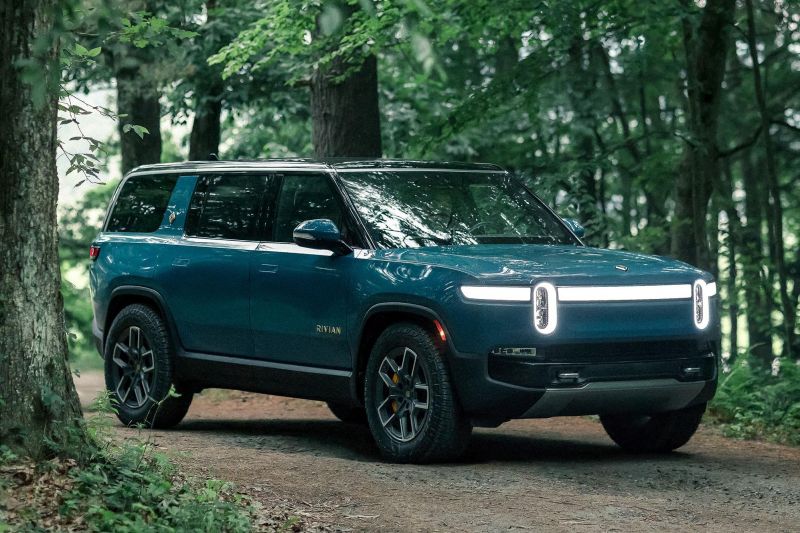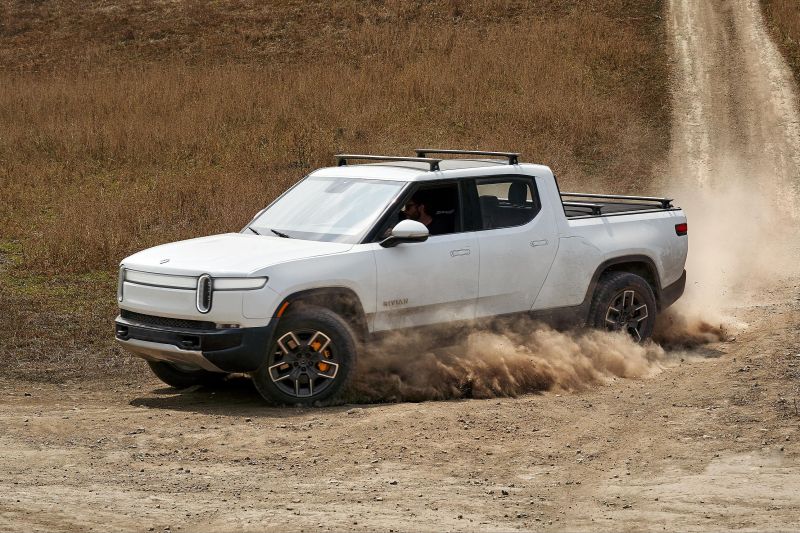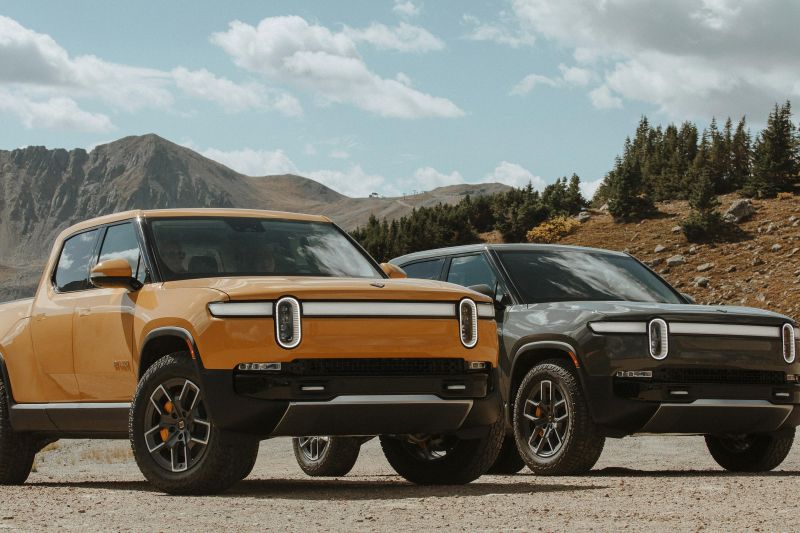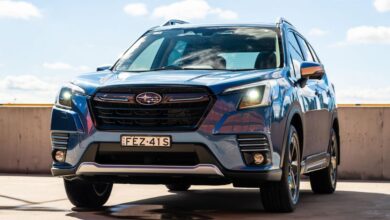Rivian cops massive losses on each vehicle it sells – report
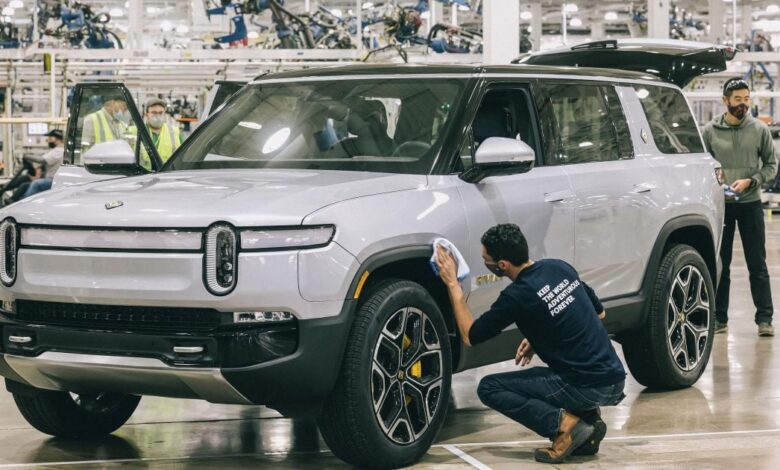
Rivian is reportedly burning an alarming amount of cash, with the company losing roughly US$33,000 (A$51,000) on every vehicle it sells.
The Wall Street Journal reports the American electric vehicle (EV) startup is losing money as it tries to scale up, a problem exacerbated by the complex design of its electric R1T ute and R1S SUV.
When Rivian exploded onto the market, it gained enormous attention and was briefly valued higher than Ford and General Motors, with the startup initially raising nearly US$12 billion (A$19bn).
Even with this enormous backing, the company has reportedly struggled to scale manufacturing.
To the end of September, Rivian has only built 65,000 vehicles since bursting onto the scene in 2021. In addition to the R1T and R1S duo, it builds an electric delivery van, the EDV, for Amazon.
Though Rivian aims to produce 52,000 vehicles this year, its Normal, Illinois factory is only running at one-third of its full capacity.
Rivian’s share price at its initial public offering (IPO) was roughly US$78, but now it has fallen to around 70 per cent of this initial value.
In just two years, the company had reportedly burned through half of its US$18 billion ($A28bn) backing, and Rivian has continued to burn over US$1 billion (A$1.5bn) a quarter at the end of the June.
The Wall Street Journal claims difficulties in the manufacturing process are the main cause of Rivian’s high production costs.
To achieve a high-level of chassis rigidity for stability and safety purposes, Rivian reportedly engineered complicated structures into the front of the R1T, adding weight and complicating the manufacturing process.
Further complicating matters is the company’s ‘skateboard’ type chassis. A skateboard-type chassis places the battery packs as the centre of the construction, with suspension and subframes attached to the ends of the battery, resembling a skateboard.
While presenting many advantages for EV packaging, Rivian’s design is reportedly over-engineered. Analysts and former employees have reportedly said the construction requires a number of metal sheets to slide into each other.
Employees have even reportedly said that various structural tubes have to be welded twice – once on the inside by an automated machine, and again by hand on its exterior. Even more alarming however, is that workers have had to reportedly hammer various pieces to get them to fit.
Further adding to the complexity is the R1T and R1S’s self-levelling air-suspension and hydraulic anti-roll bars.
The company also reportedly pushed for large amounts of components to be designed in-house, rather than purchasing less expensive parts from established manufacturers.
Such components include various electronic control units for the battery and drive functions. These computers are usually designed to handle multiple functions, however The Wall Street Journal reports Rivian had to keep these modules separate in order to meet production deadlines.
Hindering Rivian’s situation was its plan to release three models in quick succession, which afforded the company less time to work out production snags. COVID-related shutdowns and supply chain delays only worsened the situation, especially as the company was ready to significantly ramp up production.
The company is reportedly making progress renegotiating supplier contracts that were signed before the COVID-19 pandemic at above-market rates. The Wall Street Journal reports that in one meeting with suppliers, CEO RJ Scaringe had to negotiate with suppliers that were overcharging Rivian by 41 per cent.
Wells Fargo analyst Colin Langan estimates that Rivian is paying US$25,000 (A$39,000) more than the typical market rates for certain parts.
To alleviate the lingering production issues, Rivian engineers have reportedly been tasked with shaving US$40,000 (A$62,000) off production and part costs. Rivian reportedly declined to comment on the cost-cutting targets.
Mr Langan believes Rivian will need to raise its prices and cut production costs to achieve its targets, arguing the average model price would need to increase from US$80,000 (A$125,000) to US$96,000 (A$150,000).
Several independent engineering firms, some of whom have disassembled the R1T ute, have also concluded Rivian’s designs remain overcomplicated.
Such firms have reportedly said occupant protection can still be achieved using far less material. This is evident when the R1T is compared against its chief rival, the Ford F-150 Lightning. Despite being physically smaller than the F-150, the R1T weighs 310kg more.
While Rivian is still struggling with the intricacies of manufacturing such complex products, sales volume was reportedly 60 per cent higher in the second quarter of 2023 compared with the previous quarter.
This is in addition to shrinking per vehicle losses, helped by a profit of US$1.1 billion (A$1.7bn), up 69 per cent on the previous quarter.
Company executives are reportedly learning from the R1T production journey as the company prepares the “R2” line of vehicles, due in 2026 and set to sell at a lower price point.
Even established manufacturers can struggle with new-vehicle roll-outs. Ford reportedly expects to lose US$4.5 billion (A$7bn) on its EV business this year, while General Motors has been slow to increase factory output of some of its new EV models.

